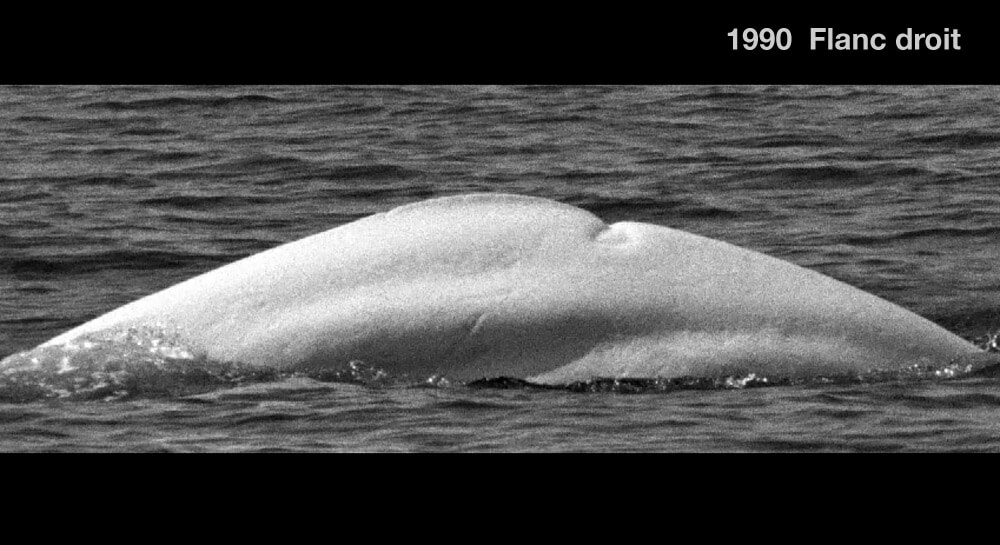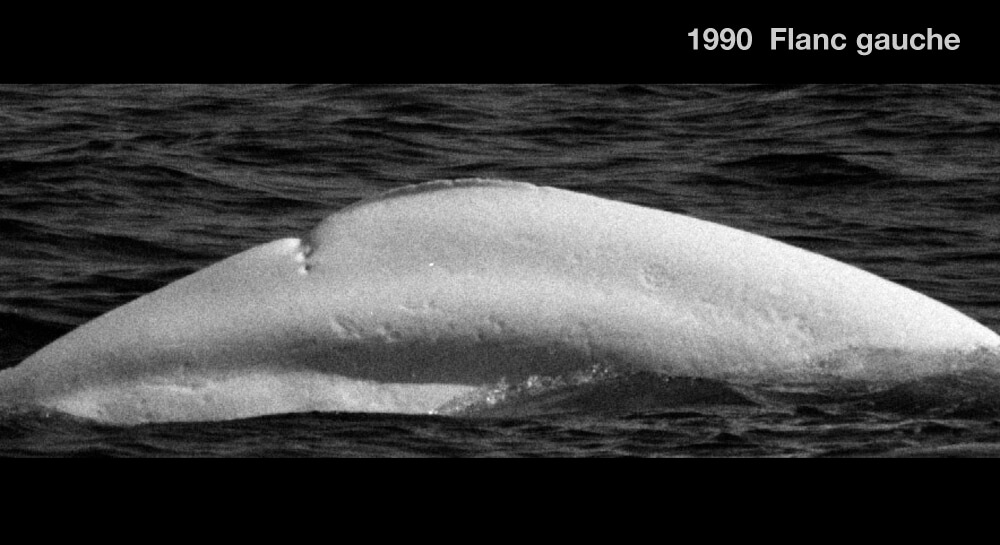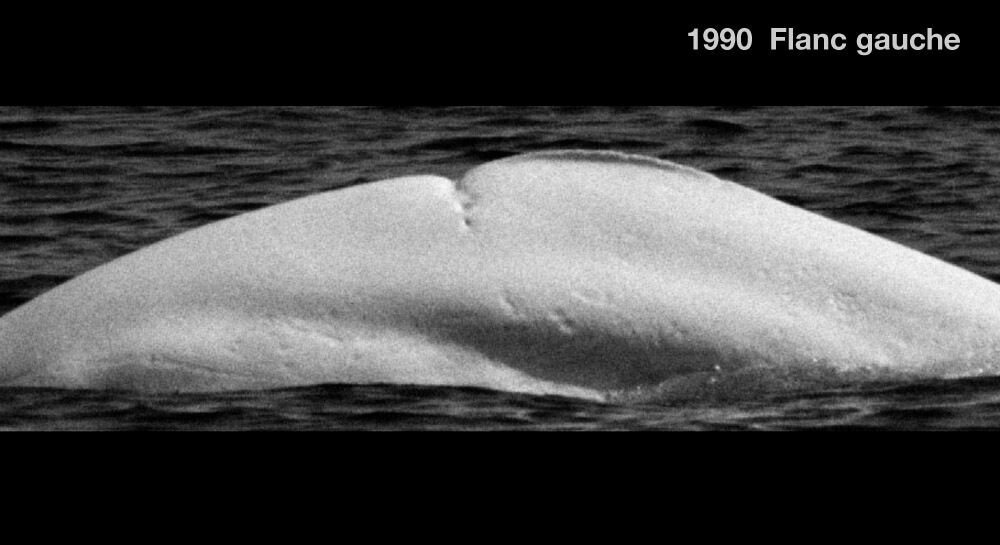Hélis
Beluga


Adopted by the students and staff of the biology module of the Université du Québec à Chicoutimi
-
ID number
DL0018
-
Sex
Unknown
-
Year of birth
Before 1961
-
Known Since
1977
Distinctive traits
Hélis is best recognized by the scar on its back, behind the dorsal crest, which runs down both sides. It is fairly wide on the right flank and rather thin on the left. The crest contains several small notches.
Life history
Known since 1977, Hélis was already all white. This means Hélis was born before 1961.
Despite its obvious markings, Hélis has been observed very few times. The data do not allow us to determine its sex or its summer range.
In 2005, Hélis deserted the St. Lawrence during the winter to find itself a long way from home in April, some 2,000 km further south, in the Delaware River in New Jersey, 200 km from the Atlantic coast. In the end, this beluga only spent four days in the area. Nine days later, Hélis reappeared in another heavily industrialized area near Philadelphia: the Schuylkill River. Since leaving this river, no further sightings of this beluga have been reported.
Observations history in the Estuary
Years in which the animal was not observed Years in which the animal was observed
Latest news
Hélis: A Wayward St. Lawrence Beluga… in the Delaware River, Near Philadelphia!
Last Tuesday, April 12, a beluga was sighted in the Delaware River, right in the middle of the city of Trenton, New Jersey, nearly 200 kilometres from the Atlantic coast! Hundreds of curious onlookers gathered along the riverbanks and aboard recreational boats to catch a glimpse of the whale. Photos from a variety of sources enabled GREMM researchers to identify the exceptional visitor as DL0018, or Hélis, a St. Lawrence beluga.
Hélis was one of the first St. Lawrence belugas to have been photo-identified by GREMM researchers as part of a scientific program for the long-term monitoring of the St. Lawrence beluga population, which was launched in 1985. At the time of first meeting, DL0018 (Dl for the initials of the beluga’s Latin name, Delphinapterus leucas) was already white in colour and therefore an adult; young belugas are greyish brown. Dl 018 is thus nearly 30 years old.
In 1989, as part of the Adopt a Beluga program launched by the St. Lawrence National Institute of Ecotoxicology (SLINE), DL0018 was adopted by the students and staff of the biology module at Université du Québec à Chicoutimi, who gave him the name of Hélis. His name was inspired by the large scar on his back in the shape of a pale helix. This scar was probably caused by a propeller when he was quite young. The wound had already fully healed by 1986!
Hélis is not the first beluga to be spotted on the eastern coast of the U.S. Belugas have been observed as far as Long Island in the state of New York. However, Hélis’ presence in the Delaware River constitutes the southernmost observation of the species. The beluga is an Arctic species; beluga populations are found from Greenland to Alaska, in Québec’s Far North and in the Canadian Arctic. The St. Lawrence population is located at the southernmost limit of this species’ normal range. The origin of these wanderers cannot always be confirmed, but such observations make it possible to better understand the movements of this Arctic species. In summer 2002, another beluga was photographed in Massachusetts Bay, near Cape Cod, and was eventually identified as an adult female from the St. Lawrence (DL0481).
Although the presence of wild animals well outside their normal range is a natural phenomenon and not inherently worrisome, these wanderers can sometimes find themselves in unfortunate situations. This is the case for Hélis. Hélis’ chances of returning to the sea and rejoining his pod are intimately connected to the attention he will receive, or rather not receive. As much as possible, Hélis should be left alone and not approached.

At the mouth of the Saguenay, Hélis is recognized among a dozen adults. The group is swimming in rough waters. He passes another group of belugas, including adults and calves. Although the two groups are barely 100 m apart, we see no interaction between them.
Sponsor
Students and staff of the biology module of the Université du Québec à Chicoutimi adopted Hélis (1989).



